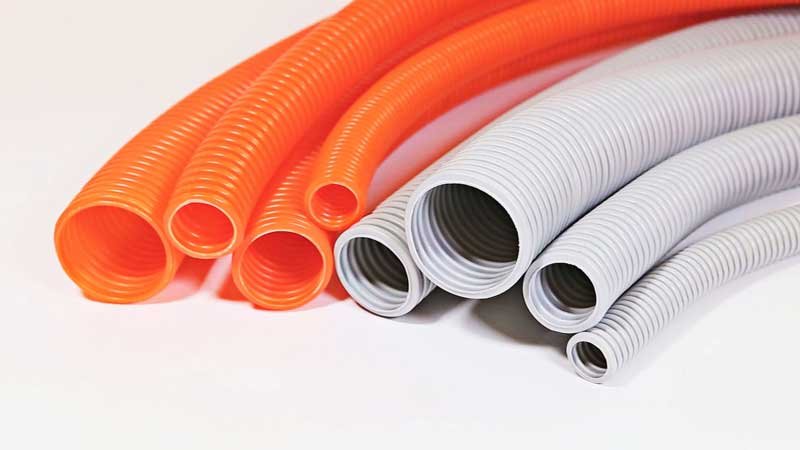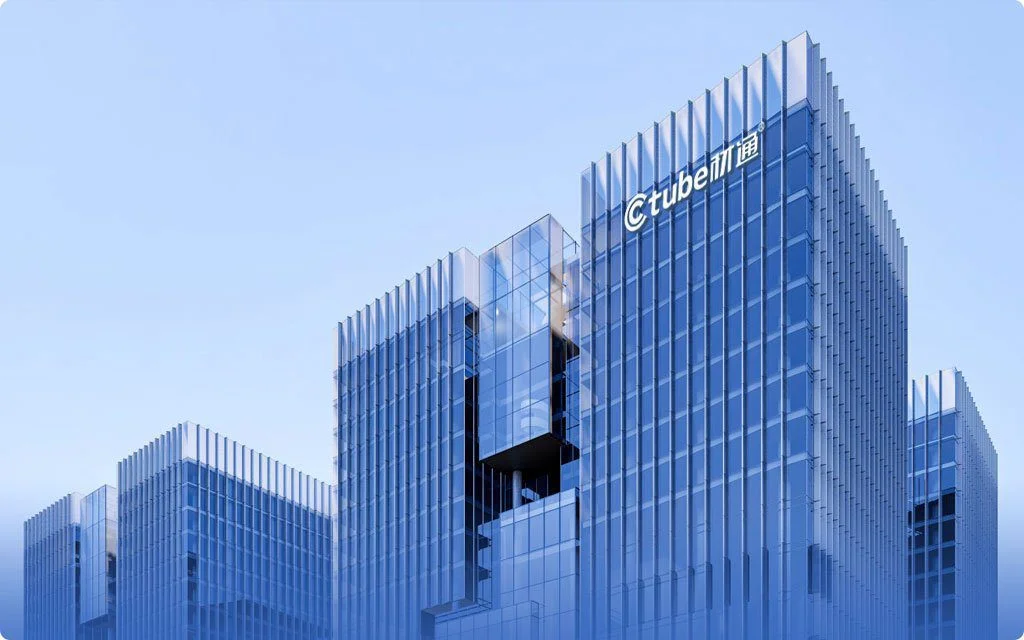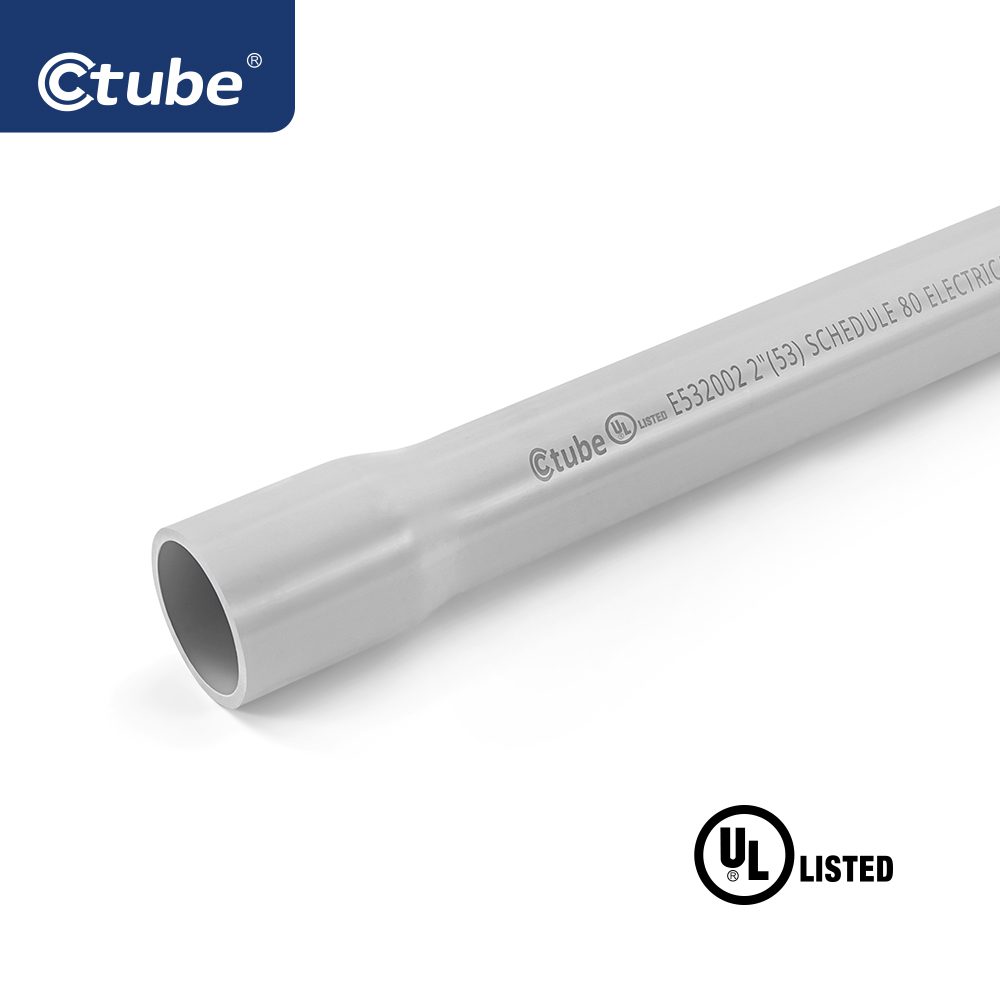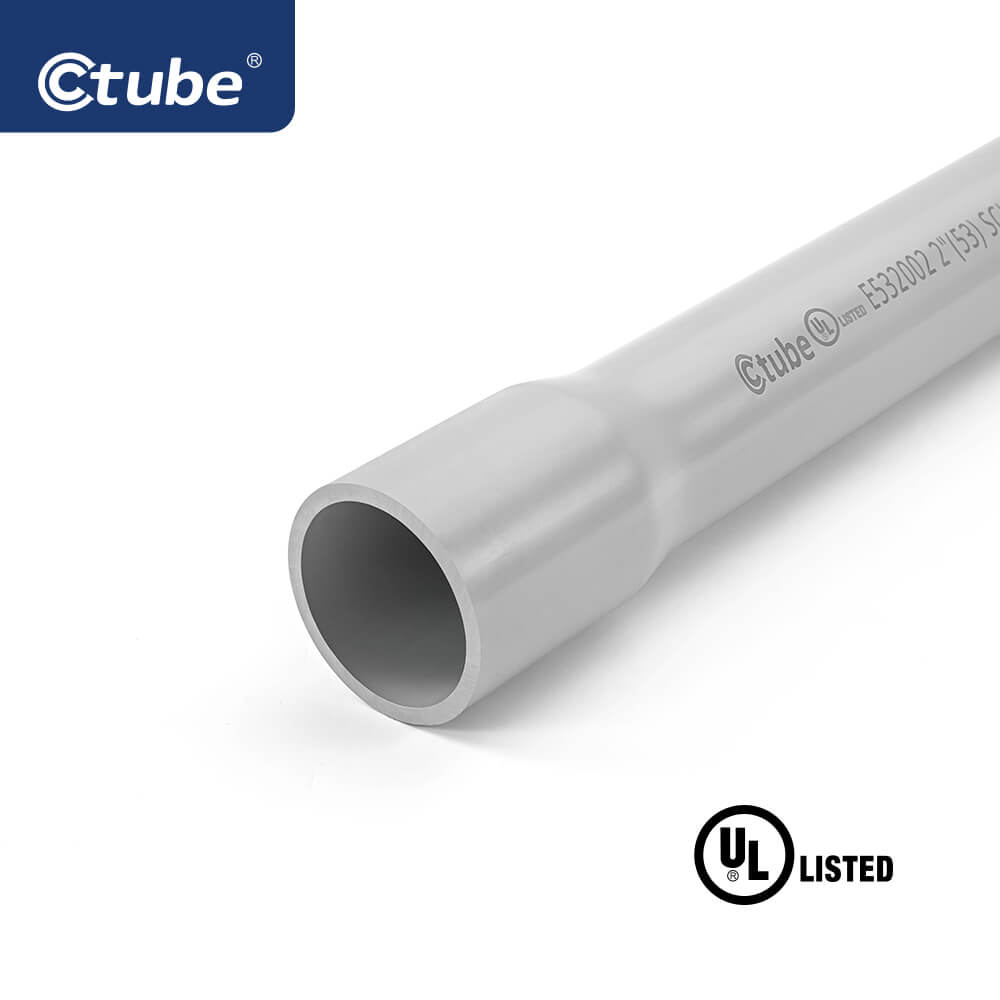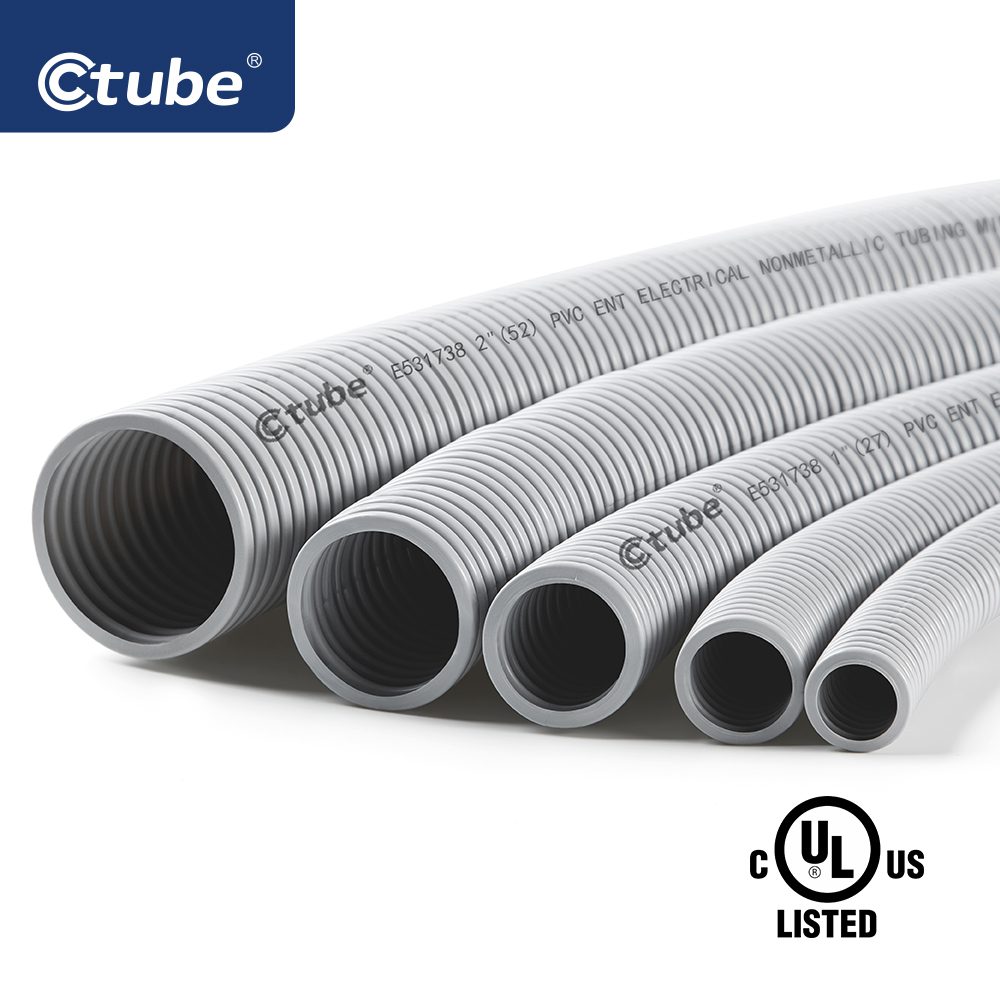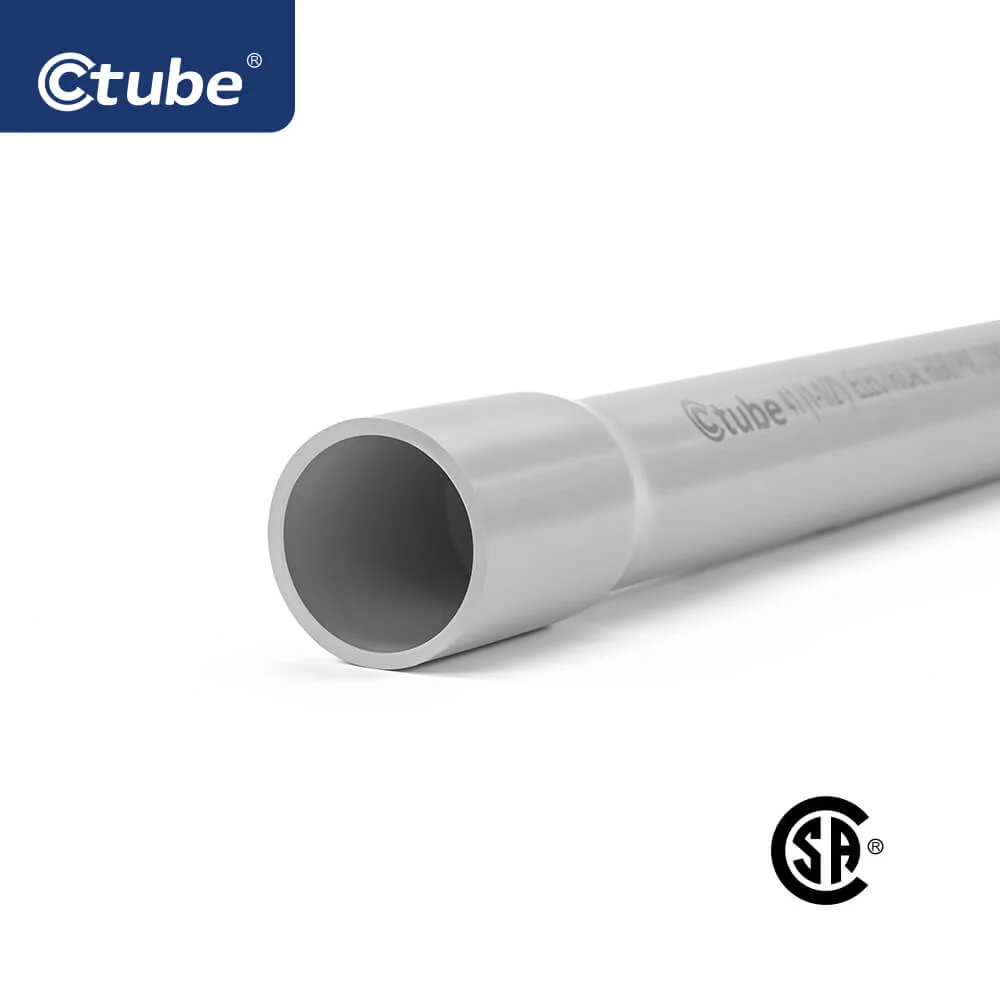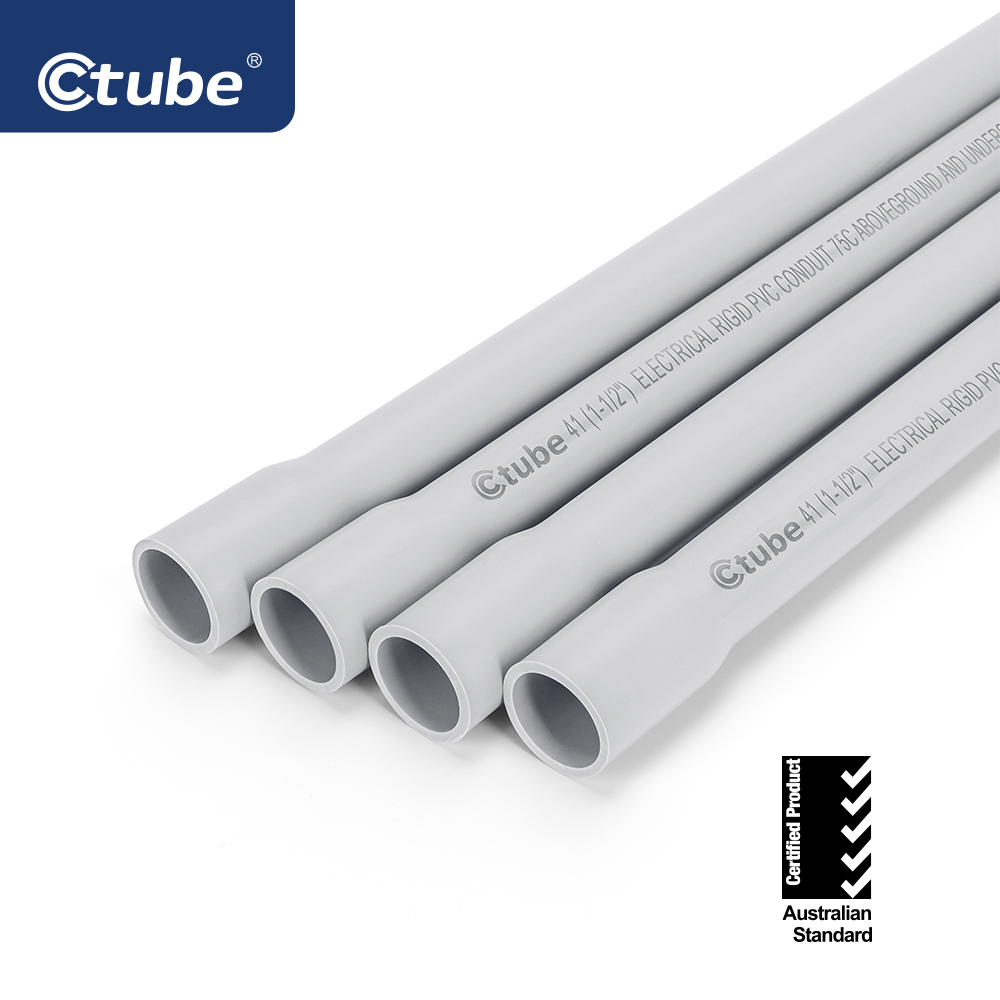مرحبًا، نحن نعود.
نود أن نتحدث عن الأنابيب المموجة في هذا المنشور، وربما أطلقت عليها أنابيب مرنة. إنه نفس الشيء. لكننا تحدثنا فقط عن الأنابيب الكهربائية غير المعدنية في هذا المنشور. إذا كنت ترغب في معرفة المزيد عن أنواع الأنابيب المختلفة، يمكنك قراءة مقالتنا أخر مشاركة هنا .
الأنبوب المموج عبارة عن أنبوب مموج ذو جدار رقيق مقاوم للرطوبة ومقاوم للحريق. وهو مرن بحيث يمكن ثنيه باليد ولا يتم ربطه بالخيط بسبب شكله المموج. يمكنك رؤية التفاصيل الموضحة في ويكيبيديا.
لذا، السؤال الأول هو، لماذا يمكن ثني الأنبوب المموج باليد ولكن لا يمكن ثني الأنبوب الصلب؟
جدول المحتويات
تبديللماذا يمكن ثني الأنابيب المموجة باليد؟
أولاً، معظم الناس لم يفكروا في هذه المسألة بشكل جدي.
نقوم بالتحليل من خلال البنية المادية. في ظل عملية التصنيع القياسية الحديثة، فإن الأنبوب المموج الذي يتم إنتاجه من خلال عملية البثق بالقالب سوف يشكل تخطيطًا متدرجًا ضمن طول ثابت يبلغ 100%، مما يعني أن نصف الجزء بارز، والجزء المتبقي مقعر. لذلك يمكن ثني الأنبوب المموج يدويًا للحصول على مساحة إجهاد كافية. يمكنه دعم نطاق تشوه محدد للتكيف مع بيئات التثبيت المختلفة لدينا.
بالمقارنة مع الأنابيب الصلبة التي يجب ثنيها أو تثبيتها في الزوايا بواسطة تجهيزات الأنابيب، يمكن ثني الأنابيب المموجة يدويًا دون الحاجة إلى أدوات خاصة، وهو ما قد يكون مريحًا للغاية ويوفر تكاليف العمالة بشكل كبير.
باختصار، الهدف من تصميم الأنابيب المموجة هو الانحناء باليد. بعد ذلك، لن تحتاج إلا إلى استخدام ملحقات بسيطة للتكيف مع المزيد من حالات التركيب. لقد تم تحسينها من حيث البنية بحيث يمكن جعل الأنابيب المموجة الكهربائية المصنوعة من نفس المادة أكثر مرونة.
ما هي استخدامات الأنابيب المموجة؟
نطلق على هذه الأنابيب اسم الأنابيب المموجة في أستراليا، والأنابيب المرنة في أمريكا الشمالية. ومع ذلك، فإننا في هذه المقالة نتحدث عن الأنابيب الكهربائية، لذا فإن الغرض منها بشكل عام هو حماية الأسلاك والكابلات في المنازل أو المباني التجارية، وأغراض إدارة الكابلات.
ولكن حتى لو كان نفس الأنبوب المموج، فإنه ينقسم عمومًا إلى أنبوب خفيف ومتوسط وثقيل في أستراليا. والفرق الرئيسي بينهما هو سمك الجدار، حيث يكون النوع الخفيف هو الأرق، ويكون النوع الثقيل هو الأكثر سمكًا. وكلما زاد سمك جدار الأنبوب، كلما كانت صلابته ومتانته أفضل. وهي تشبه أنبوب الكهرباء PVC من الجدول 40 وأنابيب الكهرباء PVC من الجدول 80 في أمريكا الشمالية.
بالطبع، هناك طريقة أكثر وضوحًا لمحبي DIY لتمييزها بالألوان. عادةً ما تكون الأنابيب المموجة متوسطة التحمل باللون الرمادي، بينما تكون الأنابيب المموجة عالية التحمل باللون البرتقالي عمومًا. بالطبع، هذا أيضًا معيار شائع لمصنعينا، وهو يتبع هذا الدليل أيضًا. نضيف دائمًا أنواعًا مختلفة من الحبر في عملية الإنتاج لتمييزها.
لماذا يتم تموج القناة؟
بالإضافة إلى الأجزاء التي ذكرناها أعلاه، يمكن ثني الأنابيب المموجة للتكيف بشكل أفضل مع المشاريع المختلفة. وهي تتمتع بالمزايا التالية.
حماية الأسلاك
مثل جميع الأنابيب المموجة، يمكن للقوى الخارجية أن تلحق الضرر بالأسلاك الموجودة بالداخل بشكل فعال. وخاصة عند تعرضها لأشعة الشمس لفترة طويلة في الهواء الطلق أو في بيئة رطبة تحت الأرض، يمكنها أن تمنع بشكل فعال الأسلاك من الشيخوخة بسرعة كبيرة وتحمي سلامة الكهرباء.
يمكن أن يظهر الأنبوب الكهربائي المرن مهاراته. يمكنه الانحناء بسهولة عند زوايا الأرض وتجنب المناطق المتضاربة عند التركيب والإنشاء تحت الأرض. على سبيل المثال، حيث تقوم بتمرير كابل Cat6، أو توجد العديد من العوائق أو الكابلات الكهربائية المحيطة، يمكن للأنبوب المموج تجاوزها بكفاءة أكبر، وفي نفس الوقت، يوفر حماية ممتازة لكابلك.
إدارة الأسلاك
عندما نستخدم أسلاكًا بمواصفات مختلفة أو نميز أسلاك غرف مختلفة، يمكننا بسهولة التمييز بينها باستخدام ألوان مختلفة أو حتى أقطار مختلفة لأنابيب التوصيل. وهو ما ثبت في ممارسة التركيب، ويمكن أن يوفر الكثير من الموارد البشرية للبحث عن كيفية تشغيل الأسلاك. والأمر الأكثر أهمية هو سهولة الصيانة في العامين المقبلين.
ومع ذلك، يمكنك استخدام استراتيجية الجمع بين الأنابيب الصلبة والأنابيب المموجة لتمديد جميع الأسلاك في المشروع في وقت واحد. يضيف مجموعة من الإشارات المتمايزة، مما يسمح لك بالعثور بسرعة على المجموعة التي تحتاج إلى صيانتها في دائرة معقدة.
القضايا التجارية والمدنية
بفضل قوانين حماية البيئة الصارمة ومتطلبات السلامة، يمكن استخدام الأسلاك والأنابيب عالية الجودة لتلبية متطلبات مشاريع البناء التجارية أو المدنية عالية الطلب. على سبيل المثال، المستشفيات والفنادق والمختبرات وغيرها من المشاريع التي تم بناؤها حديثًا لها متطلبات صارمة فيما يتعلق بمواد الديكور.
تتميز سلسلة LSZH (الدخان المنخفض والخالي من الهالوجين) من الجيل الثالث التي طورناها حديثًا من الأنابيب الصلبة ومنتجات الأنابيب المرنة بمقاومة أعلى للصدمات ومقاومة للتآكل الكيميائي وتصنيف عالٍ للحريق (تصنيف الحريق UL94 V-0). وسوف تنطفئ تلقائيًا في 5 ثوانٍ بعد قطع مصادر الحريق. لا يتم إطلاق سوى القليل من الدخان وهي خالية من الهالوجين بنسبة 100%، مما يعني تحسين معدل بقاء الأشخاص في حوادث الحريق. لقد قدمنا بالفعل التفاصيل، يمكنك الرجوع إلى مقالتنا السابقة.
ولذلك، فإننا نعتقد أن مواد الديكور سوف تتطور أيضًا نحو اللون الأخضر وحماية البيئة، وهو الاتجاه السائد.
مقاومة درجات الحرارة العالية والتآكل الكيميائي
لقد ذكرنا بالفعل أن مقاومة درجات الحرارة العالية والمواد الكيميائية هي مزايا طبيعية لأنابيب PVC المموجة والقنوات الصلبة.
بالمقارنة مع الأنابيب المعدنية، فإن استقرارها الكيميائي أفضل، ويمكن إضافة إضافات خاصة أثناء عملية الإنتاج للتعامل مع الهجمات الكيميائية الشائعة.
أما بالنسبة لدرجة مقاومة درجات الحرارة العالية فنذكرها على النحو التالي:
أنابيب PVC: من -25 درجة مئوية إلى 100 درجة مئوية (من -13 درجة فهرنهايت إلى 212 درجة فهرنهايت)
أنبوب LSZH، من -40 درجة مئوية إلى 110 درجة مئوية (من -40 درجة فهرنهايت إلى 230 درجة فهرنهايت)
إنها درجة الحرارة التي يستطيع عندها كل من الجهازين الحفاظ على التشغيل المنتظم.
حماية البيئة وخالية من التلوث
إن الاهتمام المتزايد بالحفاظ على البيئة هو الاتجاه السائد في المستقبل. لقد تم استخدام مواد مثل بلاستيك البولي فينيل كلوريد لسنوات عديدة، وعمرها النظري يزيد عن 100 عام، وهناك حاليًا تقنيات أكثر موثوقية لإعادة التدوير. لذلك يمكن اعتبارها مادة صديقة للبيئة.
علاوة على ذلك، مع خفة وزن الأنابيب البلاستيكية وسعرها المعقول، فإن تكلفة الاستخدام أقل أيضًا. ويمكن أن يقلل ذلك من تكاليف العمالة ويقصر دورة المشروع، وبالتالي فإن الأنابيب البلاستيكية تتمتع بمزايا لا يمكن الاستغناء عنها.
ما هو الفرق بين القنوات المموجة والقنوات الصلبة؟
كما ذكرنا من قبل، هذه ليست مقارنة بسيطة. نظرًا لأن الهدف من تصميم الأنابيب المموجة هو سهولة الاستخدام، فسوف تنحني دون الحاجة إلى أي أدوات خاصة إضافية للتكيف مع المزيد من مشاريع التركيب. ولكن لكل منها إيجابياتها وسلبياتها.
الأنابيب المموجة
الايجابيات،
سهل التركيب، يمكن أن يتكيف مع حالات التثبيت المختلفة
تقليل التركيبات المستخدمة ومن ثم تقليل التكاليف
سلبيات,
تتطلب تجهيزات خاصة، مثل المحول
لدى الشركات المصنعة المختلفة صيغ وعمليات مختلفة، وتختلف مقاومة الانحناء.
الأنابيب الصلبة
الايجابيات،
قوية ومتينة
يمكن لمجموعة واسعة من الملحقات تلبية احتياجات جميع المشاريع تقريبًا.
سلبيات,
ليس من السهل ثنيه ويتطلب معدات أو ملحقات احترافية
تكلفة التثبيت أعلى قليلاً
لذا دعونا نلخص بإيجاز أن النوعين متكاملان، ولا يوجد أفضل أو أسوأ على الإطلاق. نحتاج إلى شرائه واستخدامه وفقًا لاحتياجاتنا الخاصة في البناء الفعلي.
هل يمكن استخدام الأنابيب المرنة في الهواء الطلق؟
يعتمد هذا السؤال على ما إذا كان الأنبوب الكهربائي المموج الذي تشتريه يمكنه مقاومة الأشعة فوق البنفسجية أم لا وتصنيف الأشعة فوق البنفسجية.
تتمتع الأنابيب البلاستيكية، وخاصة أنابيب توصيل الكهرباء المصنوعة من مادة البولي فينيل كلوريد، بدرجة من الحماية من الأشعة فوق البنفسجية. ولكن بعد إضافة تركيبة فريدة في عملية الإنتاج، تم تحسين قدرتها على مقاومة الأشعة فوق البنفسجية بشكل كبير. ويبدو هذا النوع من أنابيب التوصيل باللون الرمادي الداكن.
نظرًا للاختلافات في تركيبات الشركات المصنعة المختلفة، يتم اختبار قدرة مقاومة الأشعة فوق البنفسجية بشكل عام في جهة خارجية، مثل SGS والمؤسسات الأخرى. سيتبعون العملية ويستخدمون معدات احترافية لمحاكاة الأنبوب المموج المعرض للأشعة فوق البنفسجية في صندوق الإضاءة فوق البنفسجية الخاص، والتحقق من عمر الأنبوب المموج، وأخيرًا الحصول على بيانات مفصلة للتقييم.
إذا كان بإمكان مورد أنابيب التوصيل تقديم تقارير اختبار رسمية فيمكن استخدامها في الهواء الطلق ومقاومة الأشعة فوق البنفسجية لفترة طويلة.
ما هو العمق الذي يجب أن يتم دفن الأنابيب الكهربائية فيه؟
دعونا نأخذ أستراليا والولايات المتحدة كأمثلة.
تتطلب اللوائح ذات الصلة في أستراليا ألا يتجاوز عمق دفن الأسلاك والأنابيب الكهربائية المدنية والتجارية العامة 500 مم، وألا يتجاوز عمق الكابلات المدفونة للمستخدمين الفرديين 300 مم عند حفر أرضهم. قد يكون أعمق بالنسبة للجهد العالي، حيث يصل إلى 750 مم أو حتى أعمق. تُظهر اللوائح ذات الصلة بـ NEC 300.5 في الولايات المتحدة أيضًا أن عمق دفن الأنابيب الكهربائية المصنوعة من البولي فينيل كلوريد يجب ألا يتجاوز 18 بوصة، أو 450 مم. يمكن أن يصل العمق إلى 600 مم (24 بوصة) للكهرباء ذات الجهد العالي حسب الحالة.
هل تم دفن أنبوب السلك على عمق أكبر قدر ممكن؟ الإجابة هي لا، لأن الصيانة ستكون أكثر صعوبة إذا تم دفنه على عمق أكبر. علاوة على ذلك، نحتاج إلى اتباع المعايير الوطنية، وخاصة متطلبات NEC (الكود الكهربائي الوطني). وإلا، فقد يؤدي ذلك إلى انتهاك اللوائح والتعرض للعقوبات.
وتوضح المتطلبات الاستنتاجات التي توصلت إليها بلدان مختلفة بعد تحليل المعلومات النوعية عن موقع كل بلد. وهناك نقطة أخرى وهي أن بلدك ربما دفن كابلات الاتصالات عميقًا في الأرض أو بنى مرافق عامة مثل مترو الأنفاق. لكننا لا نعرف، لذا فإذا دفنت الكابلات على عمق كبير، فسوف يتسبب ذلك في حدوث مشاكل تتعلق بالسلامة.
هل يحتاج الأنبوب الكهربائي المموج إلى لصق؟
لقد ناقشنا موضوعًا مشابهًا من قبل وتوصلنا إلى أننا بحاجة إلى لصق مفاصل الأنابيب معًا، وهو ما له ميزتان.
أولاً، يمكنه منع ارتخاء اتصال الأنابيب الناتج عن قوة خارجية أو عوامل أخرى بشكل فعال لمنع تعرض الكابل الداخلي للهواء مباشرة؛
ثانيًا، يتم ملء المواد اللاصقة في وصلة الأنبوب بجزيئات غراء أصغر حجمًا. يتم التخلص من الفجوة في الوصلة، مما يجعل وصلة الأنبوب أقوى ويحسن أداء مقاومة الماء في نفس الوقت. تجنب تسرب المياه الجوفية أو الأرضية إلى خط الأنابيب والتسبب في تلف الأسلاك.
ما هو الفرق بين الأنابيب المموجة والمنقسمة؟

كلاهما عبارة عن أنابيب مموجة، ولا يختلف سير العملية كثيرًا. والفرق الوحيد هو أنه أثناء عملية إنتاج الشق الناتج، لن يتم إغلاق القسم تمامًا عند تصميم القالب، وبالتالي تشكيل شكل الفتحة. لذا فإن وظائفهما متشابهة تقريبًا.
بالطبع، على الرغم من أنهما يبدوان مختلفين قليلاً في المظهر، إلا أن هذا التصميم له مزايا. فهو يسهل علينا تمرير الأسلاك.
لا حاجة إلى أدوات إضافية، بل ربط الخيط والضغط عليه مباشرة. وقد أدى هذا التحسن الطفيف إلى تحسين أداء البناء والصيانة اللاحقة بشكل كبير.
ومع ذلك، فإن العيوب واضحة أيضًا. لا يوجد أنبوب مموج مغلق بالكامل، وقد انخفضت مقاومة الصدمات، وهناك فرصة أكبر لتعرض السلك للهواء مباشرة، خاصة بعد تقدم عمر أنبوب التوصيل أو تلفه.
ومع ذلك، نعتقد أنه من الملائم جدًا استخدامه في المعدات أو المرافق الميكانيكية لأنه غالبًا ما يحتاج إلى الصيانة. عادةً ما يحتاج الأنبوب المموج إلى الفحص عند تعرضه للتلف أو الشيخوخة. في هذه الحالة، يكون مفيدًا.
هذا كل شيء، وآمل أن تكون قد فهمت الأمر بعد قراءة هذا المنشور. إذا كانت لديك أسئلة أخرى أو تريد التعرف على منتجاتنا، فيمكنك الاتصال بنا عبر إرسال نموذج الاتصال أو شريط الأدوات العائم على اليمين. شكرًا لك مرة أخرى على القراءة.


